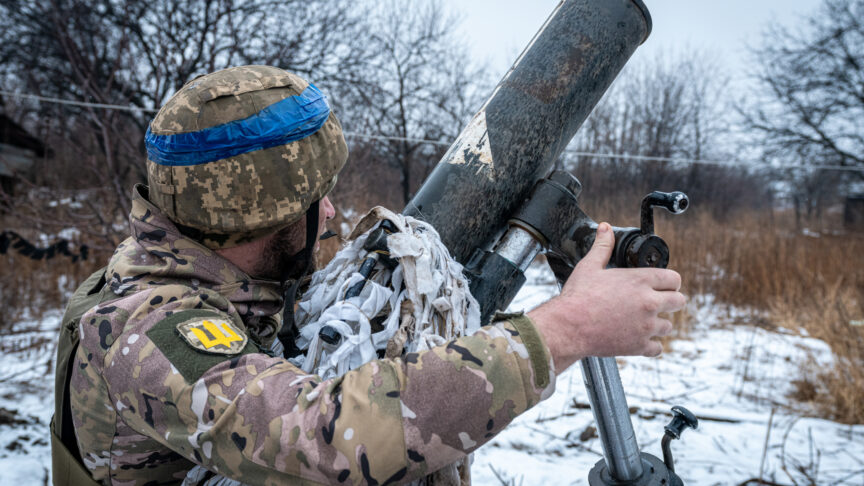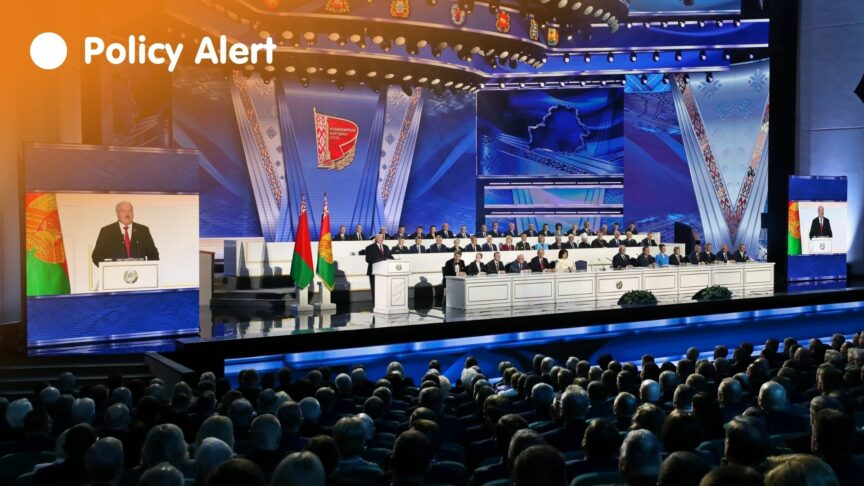Ukraine’s survival: Three scenarios for the war in 2024
Russia has gained the upper hand in its war on Ukraine. To reverse Moscow’s progress, the West will need to invest more in supporting Kyiv. With this in mind, here are three scenarios for what could happen in 2024
Last year, I sketched out how Russia’s war on Ukraine might unfold during the course of 2023. Since that time, the conflict has drifted towards the more negative end of expectations. Over the past year, Ukraine was unable to reverse many of Russia’s territorial gains, and by the winter Moscow had regained the strategic initiative.
At the end of 2022, Russia was in a worse predicament than Ukraine is now, but after hitting this low it found ways to fix its main problems. It began to innovate in terms of its military tactics in order to use its forces more effectively, used innovative recruitment tactics to fill its ranks, and transitioned towards a war economy to increase production of much-needed equipment.
In contrast, the West failed to enact the policies necessary to ease Ukraine’s materiel shortages. Over 2023, there was no concerted defence-industrial effort to resupply Ukraine with armoured fighting vehicles of various kinds. Even the production of ammunition is a long way behind schedule, particularly in Europe: of the 2.3 million shells used by Ukraine in 2023, only 300,000 were European. Joint European procurement initiatives on ammunition only became a reality in late 2023, and similar initiatives for military equipment will get going by 2024 at the earliest.
The time this takes to materialise exacerbates Ukraine’s dependency on American support, with the US presidential election in November likely to determine the country’s fate. While current budgetary battles in the United States and partisan fights over military assistance have kicked in earlier than expected, Europeans nevertheless failed to use the last 12 months to prepare for this turn of events. The European Union’s much-vaunted strategic autonomy goal is a mirage.
As I predicted a year ago, there is no ceasefire, no negotiation, and no stalemate. Time and again, Vladimir Putin has made clear his aim is not to conquer just 20 per cent of Ukraine. In his mind, Russia and Ukraine are one, and the existence of an independent Ukrainian nation is an anti-Russian plot cooked up through foreign interference. His speech to the Russian defence ministry last month reconfirmed this ambition. He wants to annex the eastern and southern parts of Ukraine and would likely be content to turn the remainder into an occupied puppet state, little different to today’s Belarus.
Furthermore, Putin’s political aim is to re-establish Russia as a new great power, reshaping the political order of Europe. Re-establishing the “unity” of Russia-Ukraine-Belarus is the precondition for this resurrection. A true ceasefire, or the abandonment of further attempts to conquer Ukraine, would for Putin mean not only the abandonment of his aspirations in that country, but his entire political vision for the future international order. He has invested immense resources in this gamble and will not easily reconsider, if not forced to do so. For these reasons, only binary outcomes are possible: either Russia wins or Ukraine wins.
2024 will be the most challenging time for Ukraine since the first two months of the full-scale invasion
Given Western hesitation to ramp up arms production, and the lack of planning for the period after the counter-offensive, 2024 will be the most challenging time for Ukraine since the first two months of the full-scale invasion. By mid-2023, Kyiv had more or less given up relying on the West to resupply it with what it needed to sustain the war: drones, electronic warfare systems, and armoured combat vehicles such as tanks and infantry fighting vehicles. The Ukrainian government looked at producing these locally and initiated an ambitious programme not only to resurrect Ukraine’s pre-war arms industry, but even to surpass it with the assistance of Western companies. This has met with some success, but these vehicles will not be ready until next year, and will be available in larger quantities only by 2026. On top of this, Ukraine will remain dependent on the West for aircraft, aircraft armaments, and complex air-defence missiles because the complexity of these systems does not allow domestic production. Ukraine will also remain dependent on the supply of artillery munitions from abroad because of the sheer quantity used in the war.
To this backdrop, three main scenarios present themselves.
The positive scenario
In the most positive scenario for Ukraine, Donald Trump finds himself barred from running for the presidency and Nikki Haley becomes the Republican nominee. She quickly moves to criticise the administration’s weakness and indecision, which Joe Biden responds to by sending greater aid to Ukraine. The domestic mood turns around, and the US begins to provide Ukraine with more generous assistance, particularly more modern F-16C/D fighters, which have proper stand-off munitions and ATACMS missiles. With these, Ukraine is able to push Russian air forces further back from the front, decreasing their effectiveness.
While Ukraine blunts Russian offensives and inflicts significant losses in manpower and equipment, it simultaneously manages to improve its training activities behind the front. It increases the cohesion of its units, forms “new force” brigades, and tests new prototypes of electronic warfare equipment and drone defence weapons.
The EU officially lists the defence industry as a sustainable industry, which eases access to research and development funds, credits, and insurance. This enables enhanced production of ammunition, vehicle spare parts, and the electronics that feed into Ukrainian drone manufacturing. And although the EU’s move is much too late to make a difference this year, its effect will be felt in the years after. As such, by the end of 2024, Ukraine has put in place the preconditions needed to regain the initiative and liberate more territories in 2025, when more armoured combat vehicles roll off domestic and Western assembly lines and ammunition production has caught up with demand. In this regard, who wins the US presidential election has little bearing on events on the ground.
The intermediate scenario
In the intermediate scenario, the Biden administration muddles though 2024 in a messy election campaign. Republicans in Congress behave transactionally, trading Ukraine assistance packages for concessions on domestic pet projects such as the wall along the United States’ southern border. The US carries on drip-feeding assistance to Ukraine.
Meanwhile, Europeans continue to deliver only around a third of their ammunition and spare parts pledges, which helps the US keep Ukraine afloat – but only in a defensive posture. Ukraine manages to hold its lines on the battlefield. In Donbas, it will have to cede some terrain under Russian pressure. But it will maintain the integrity of its defensive lines and the formations fighting there. Ukraine’s lack of armoured vehicles becomes particularly noticeable in the second half of 2024, once Europeans have expended their delivery of cold war legacy vehicles they had held in storage. Western-designed vehicles continue to suffer from shortages of spare parts, while Warsaw Pact legacy vehicles suffer from ammunition shortages.
To cope with the insufficient materiel and the lack of trained officers, Ukraine disbands some newly formed brigades to achieve better manning levels of the remaining formations. It also continues to develop and experiment with new domestically produced equipment and refine its defensive tactics and unit cohesion during the year. However, because it needs to sacrifice soldiers to conserve precious and irreplaceable equipment, manning will become an increasing challenge by the end of 2024. Old and used European F-16A/B aircraft continue the role played by the Soviet fighters in the Ukrainian air force: they keep Russian planes away from civilian centres but struggle to contain them close to the front. In a nutshell, Ukraine remains on the defensive and survives 2024, with the result of the US presidential election set to decide the course of the war in 2025.
The negative scenario
In the most negative scenario for Ukraine, Trump becomes the presidential nominee, and increasingly anti-Ukrainian rhetoric dominates US discourse. In Congress, Republicans want to see Biden fail under any circumstances and refuse to accept horse-trades to keep the supply lines to Ukraine open. Europeans still send arms, but they lack the production capabilities and reserve stock needed to make up for the US. They fail to agree on long-term funding in the European Peace Facility, or to conclude large, long-term contracts for vehicles or ammunition, meaning the production capability of the European defence industry barely changes. At the same time, European defence-industrial cooperation with Ukraine faces difficulties.
Ukrainian forces thus find themselves increasingly short of the shells and missiles they need just to maintain even defensive action. The Russian armed forces exploit this situation to increase the pressure on Ukrainian lines. Russian breakthroughs can only be contained by Ukrainian forces retreating. This pressure prevents Ukraine from properly rotating its forces in the front, leaving it unable to pull brigades from line duty to train and reconstitute them. By the end of 2024, most Ukrainian brigades are tired and exhausted.
In the absence of US deliveries, Ukraine runs critically short of surface-to-air missiles and air-to-air missiles for its fighter force. Russia exploits this by quickening the pace of strategic bombing against Ukrainian cities. Shahed drones probe local air defences, with conventional fighters following up by joining cruise missile attacks. These bombing campaigns impede Ukraine’s plans to resurrect its defence industry and replace Western combat systems with domestically produced systems. The increasingly grim outlook convinces many Ukrainians to flee. By the end of 2024, 10 million Ukrainians have fled to the EU, with numbers rising. The cost to Europeans of hosting refugees far outweighs the cost of assisting Kyiv militarily.
At the end of the year, Trump defeats Biden. Panic grips Europe, and many European capitals halt deliveries to Ukraine altogether, funnelling military supplies into their own armed forces in expectation of a US withdrawal from Europe and imminent Russian attacks on their own countries. The war in Ukraine is seen as lost by most in the West, although Ukraine itself keeps fighting against the odds.
Course correction
By the end of 2022, the Russian army had gone through its phase of weakness. Short of manpower, it had been driven off significant portions of terrain by a more agile, better motivated Ukrainian army. At that time the mood was optimistic, and a Russian defeat seemed probable. But these trends have now reversed.
The West still has agency in this war; it can still turn things around. For Europeans in particular, this means putting their money where their mouth is. The acquisition of ammunition, missiles, combat vehicles, and spare parts is severely behind schedule – not that it was ambitious to begin with. Although late in the day, Europeans can still correct this course.
The European Council on Foreign Relations does not take collective positions. ECFR publications only represent the views of their individual authors.



